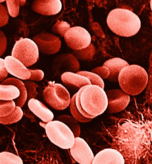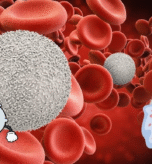The beauty industry has long been associated with luxury, pampering, and indulgence. However, behind the glitz and glamour lies a harsh reality: the beauty industry is one of the largest contributors to waste and pollution worldwide. From packaging waste to chemical-laden products, the environmental impact of the beauty industry is staggering. In this article, we’ll explore the importance of reducing waste in beauty and what consumers, manufacturers, and policymakers can do to make a positive change.
The Problem: Beauty Industry Waste
The beauty industry generates an estimated 120 billion units of packaging waste every year, with a significant portion ending up in landfills and oceans. This waste includes:
- Plastic packaging: Most beauty products come in plastic containers, many of which are not recyclable. This results in millions of tons of plastic waste, contributing to the already overwhelming plastic pollution problem.
- Product waste: Expired or unused beauty products often end up in the trash, wasting resources and contributing to landfill waste.
- Chemical waste: Many beauty products contain harsh chemicals that can harm the environment and human health when not disposed of properly.
The Impact: Environmental and Health Consequences
The beauty industry’s waste problem has severe environmental and health consequences, including:
- Climate change: The production and transportation of beauty products contribute to greenhouse gas emissions, exacerbating climate change.
- Water pollution: Chemicals from beauty products can contaminate waterways, harming aquatic life and human health.
- Soil pollution: Waste from beauty products can also pollute soil, affecting ecosystems and human health.
- Human health risks: Exposure to harsh chemicals in beauty products has been linked to various health problems, including cancer, reproductive issues, and skin conditions.
The Solution: Reducing Waste in Beauty
Fortunately, there are many ways to reduce waste in the beauty industry:
- Sustainable packaging: Manufacturers can adopt eco-friendly packaging options, such as refillable containers, biodegradable materials, and minimal packaging designs.
- Product reformulation: Companies can reformulate products to use natural, organic ingredients and reduce chemical waste.
- Zero-waste products: Some companies are now offering zero-waste products, such as shampoo bars and soap bars, that eliminate packaging waste altogether.
- Consumer education: Educating consumers about the importance of sustainability in beauty can encourage them to make more environmentally friendly choices.
- Recycling programs: Companies can establish recycling programs for beauty products, making it easier for consumers to recycle.
What You Can Do
As a consumer, you have the power to drive change in the beauty industry. Here are some simple steps you can take:
- Choose sustainable products: Opt for products with eco-friendly packaging and natural ingredients.
- Recycle: Participate in recycling programs or properly dispose of beauty product waste.
- Buy in bulk: Purchasing products in bulk can reduce packaging waste.
- Support sustainable brands: Encourage companies that prioritize sustainability by choosing their products.
- Get creative: Repurpose or upcycle beauty product containers to reduce waste.
Conclusion
The beauty industry’s waste problem is a pressing issue that requires attention and action. By understanding the impact of beauty industry waste and making conscious choices, we can reduce waste, promote sustainability, and create a more environmentally friendly beauty industry. As consumers, manufacturers, and policymakers, we must work together to create a more beautiful, sustainable future.



